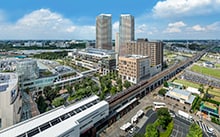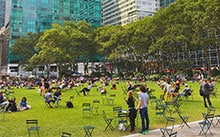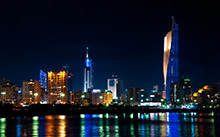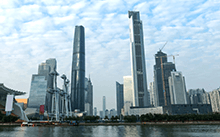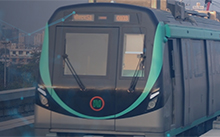Hitachi Delivered Social Innovation in Moreno Valley by collaborating with the City to implement a public safety and traffic management solution. This co-creation approach resulted in the ability of the customer to leverage the public safety and camera system as a foundation to address traffic incidents.
We have become a safer and smarter city through the use of Hitachi Visualization. We are safer because of the number of incidents we are able to investigate, the clarity that we’re able to gain on events happening in our city, and the leads that we generate that we would not have otherwise.
Steve Hargis
Technology Services Division Manager, City of Moreno Valley
Envisioning how to provide the best public safety most efficiently starts with an assessment of needs and resources. Moreno Valley needed to enhance visibility and responsiveness amid a time of fiscal cutbacks. Putting in place a citywide video camera system offered the opportunity to maximize resources and meet future requirements.
“Our research into existing police camera systems in other cities highlighted several shortcomings. The most important pitfall that we discovered is that video critical to a situation tended to be out of the view of a single camera.
We decided that our standard camera deployment would include clusters of three cameras, which dramatically increase the likelihood of capturing all critical views of an event,” Hargis says.
Moreno Valley Police Department (MVPD) reached out to citizens in a series of public meetings. The goal of community outreach was to explain the city’s vision, gather citizen input and answer questions. Transparency emerged as a key value for citizens who wanted to be able to see what the police would see on the cameras.
The city staff had a few other hurdles to overcome. Line-of-sight and signal interference were terrain issues that would have to be incorporated into the design of the wireless communications network for a camera system. Moreno Valley did not have adequate fiber optic connectivity: A multifaceted frequency and channel plan was required to support video transmission from wherever the cameras were mounted to the city’s viewing rooms.
Making it more complicated was the need to work with nearby March Air Reserve Base on network planning and approvals to ensure nothing interfered with air operations. The city did not own several of the locations where they wanted to place cameras, so developing partnerships with other public entities and private organizations was a must. Relationships would also help in building a complete solution and potentially capitalizing on private-use camera assets.
Another requirement was to make the camera system a citywide resource. The camera technology would need to integrate with existing and future systems of other city departments. In this way, the police department would have immediate access to all the necessary technologies to aid in deterring crime and accelerating investigations.

The city looked at camera systems that were implemented elsewhere in order to help shape the scope of work for its own request for proposal. After thoroughly evaluating proposals from potential solution vendors, Moreno Valley selected Hitachi Visualization to realize its substantial safety goals. The solution was based on Hitachi Visualization Platform (HVP) edge-capture devices and Hitachi Visualization Suite (HVS) software.
Hitachi Visualization Platform:HVP devices include high-definition video cameras with analytics, and intelligent gateways for third-party video integration and live streaming. The gateways act as data ingest services for any external sensor data, and include powerful workflow capabilities. All Hitachi devices are ruggedized to endure variable weather conditions and remain securely mounted.
Hitachi Visualization SuiteHVS is unique, cloud-based software ideal for capitalizing on rapid response and actionable data intelligence in the event of emergency or crisis. Designed to seamlessly integrate any video and data resources, HVS enables users to leverage and view just about any layer, from computer aided dispatch (CAD) or 911 systems, license-plate recognition and gunshot sensors and private-camera systems to traffic systems, radar and incident databases. All the layers or systems are then displayed, along with any real-time alert and live video feeds, on an intuitive, map-based screen that is viewable in various formats, from the cloud or on-premises. Unlike most security management systems, Hitachi Visualization works as a software-as-a-service (SaaS) model, enabling turnkey deployment and a comprehensive, flexible, end-to-end solution for improving situational awareness.
Implementation InnovationThe solution was implemented during a 10-month period and initially included 212 cameras mounted throughout the city. Using the three-cluster configurations, two cameras are fixed at a location to consistently record north-south or east-west views while the third camera in the cluster is a pan-tilt-zoom (PTZ) camera. The cluster design offers a better opportunity to capture event details that might otherwise be missed. For city parks, there is no standard deployment strategy due to the uniqueness of each park layout. Some of the cameras are combined with speakers to allow MVPD staff to remotely communicate to park users, and in some cases, abusers.
“The inclusion of a speaker on camera has an impact on those who may not be using park facilities in an appropriate manner. It’s also incredibly effective as a police force multiplier for the department. Viewing multiple parks from a remote viewing room is obviously much more effective than dispatching officers whenever someone may be needed at the park,” notes Hargis.
Video footage from parks and intersections is streamed to the police department’s viewing room and also to the traffic management center, located just inside City of Moreno Valley City Hall. Hitachi Visualization was integrated with two existing technology networks so far, for that whole-city resource.
“Hitachi Visualization allows us to monitor traffic in real time as we adjust the signal timing. We have central control software for both traffic management and emergency vehicle preemption. Now we can see exactly what’s happening, what resources to deploy, and make any changes on the fly,” details Eric Lewis, traffic engineer for the City of Moreno Valley.
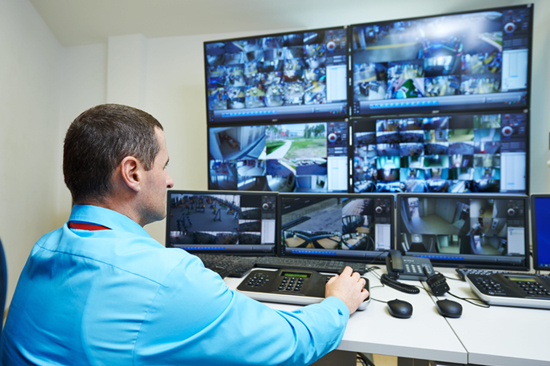
The City of Moreno Valley developed new relationships with various businesses and agencies, such as the County Sheriff’s Office CAD system, to orchestrate its camera program.
Partners in Enhancing Public SafetyThe first of two distinct types of public-private partnerships was forged with mutual memorandums of understanding. These agreements allowed the city to use some of the property or assets of these entities in order to install camera or radio components.
The second form of partnership is with volunteers, which is growing in popularity. The city works with local malls, stores, churches, schools and other organizations that have existing cameras and would be willing to permit the police department to view select cameras from those systems. Dubbed the Deputy Cam System, this program uses a website to allow organizations to register or “deputize” their cameras in helping to deter crime and promote public safety.
Hitachi Visualization makes it easy to integrate multiple browsers and various client operating systems, so there is no need for client-side software downloads or installs. Instead, HVP gateways on private-access cameras stream the intended footage over the Internet to the city systems.
Expand SuccessThe Hitachi solution in Moreno Valley has grown to 275 city cameras, and select private-use devices. The city’s retention policy is to store 30 days of camera footage from parks and intersections, and a year’s worth of footage for police department camera footage. The data resides on a SAN managing 142TB. All cameras are viewable via the Transportation Management Center, the police department viewing room, and other strategic locations throughout the city. In the lobby of the Police Services Building, there is a split-screen monitor that displays the live recording of nine active cameras. Citizens are welcome to see exactly what the officers are seeing in real time.
Hitachi Visualization allows us to monitor traffic in real time as we adjust the signal timing. We have central control software for both traffic management and emergency vehicle preemption. Now we can see exactly what’s happening, what resources to deploy, and make any changes on the fly.
Eric Lewis
City Traffic Engineer, City of Moreno Valley
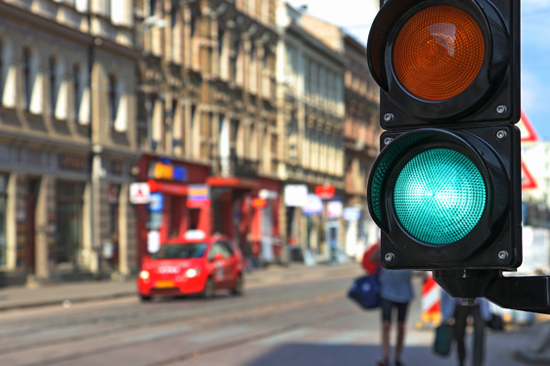
MVPD has used the Hitachi solution to investigate over 800 incidents in the last two years. “We anticipated that the cameras would provide visibility in many areas of the city. We’ve also had unanticipated benefits, such as greater situational awareness and clarity for officers before they do go into the field or arrive at a scene. Also, they have been able to generate more leads in a case where we might not have any witnesses. They can go back to the camera footage and take a look at what happened,” says Hargis
The city has also been tallying a larger number of families coming back to the parks. “There is a greater sense of safety, of well-being, since we installed the cameras and speakers. Other city departments are also very excited to use the system,” he continues.
The city has boosted its ability to effectively move and manage traffic since integrating Hitachi Visualization with its other network systems. “With Hitachi Visualization, we now monitor and proactively respond to traffic in real time. From special events, such as the air show and our Fourth of July parade, to what’s happening in construction work zones, we are moving traffic in the ways it demands. When traffic incidents occur, we are able to rapidly contact the appropriate emergency responders who can get to the scene faster and more prepared,” says Lewis.
“The end result is that we have become a safer and smarter city through the use of Hitachi Visualization. We are safer because of the number of incidents we are able to investigate, the clarity that we’re able to gain on events happening in our city, and the leads that we generate that we would not have otherwise,” Hargis finishes.
